Remember that terrifying recording of Little Jack Horner that Thomas Edison abused children with via the first talking doll? Here’s a reminder, just in case it hasn’t been haunting your nightmares for the past year.
[audioplayer file=”http://www.thehistoryblog.com/wp-content/uploads/2011/05/EdisonTalkingDoll-LittleJackHorner1890_64kb.mp3″ title=”RUN, RUN FOR YOUR LIFE”]
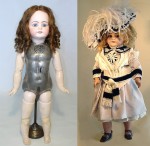 Screamy Jack Murder was recorded on a wax cylinder which was then installed along with a miniature phonograph into the body of a doll. The doll was a large specimen, 22″ high and weighing four pounds, with a metal body, articulated wooden arms and legs and a bisque head imported from German company Simon and Halbig. The metal chestplate had holes in it through which the sound from the phonograph would play. A hand crank jutted out the back of the doll. To make the doll talk, the crank had to be turned steadily and slowly.
Screamy Jack Murder was recorded on a wax cylinder which was then installed along with a miniature phonograph into the body of a doll. The doll was a large specimen, 22″ high and weighing four pounds, with a metal body, articulated wooden arms and legs and a bisque head imported from German company Simon and Halbig. The metal chestplate had holes in it through which the sound from the phonograph would play. A hand crank jutted out the back of the doll. To make the doll talk, the crank had to be turned steadily and slowly.
In addition to being heavy and complicated, it was also expensive. The basic model that came dressed in a simple chemise cost $10, about $200 today and the equivalent of two weeks’ salary for the average person in 1890. The model that came with an elaborate Victorian dress cost an exorbitant $20-$25.
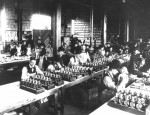 Edison had thought about making a talking doll since he first invented the phonograph to record and play back sound in 1877 at his lab in Menlo Park, New Jersey. It was electrical engineer and chemist William W. Jacques who, along with his partner Lowell Briggs, would develop a working doll-sized prototype from Edison’s original tinfoil phonograph 10 years later. In October of 1887, Jacques and Briggs contracted with Edison for the right to use his name and patents to manufacture talking dolls in return for stock and royalties. They created the Edison Phonograph Toy Manufacturing Company, but before they could begin production Edison pulled one of his trademark back-stabbings and took over the company, ousting Jacques who would spend years suing him for it.
Edison had thought about making a talking doll since he first invented the phonograph to record and play back sound in 1877 at his lab in Menlo Park, New Jersey. It was electrical engineer and chemist William W. Jacques who, along with his partner Lowell Briggs, would develop a working doll-sized prototype from Edison’s original tinfoil phonograph 10 years later. In October of 1887, Jacques and Briggs contracted with Edison for the right to use his name and patents to manufacture talking dolls in return for stock and royalties. They created the Edison Phonograph Toy Manufacturing Company, but before they could begin production Edison pulled one of his trademark back-stabbings and took over the company, ousting Jacques who would spend years suing him for it.
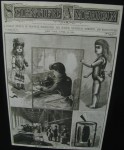 Sometime between September and November of 1888, Edison finalized a prototype model that recorded voices on a cylinder of solid tin. Since he hadn’t yet figured out how to dub recordings, Edison hired women to holler nursery rhymes “in a childish voice” into the miniature phonographs over and over again, which might at least in part explain why they sound criminally insane. Scientific American visited Edison’s West Orange, New Jersey doll production facility and wrote a glowingly positive cover story describing the recording process:
Sometime between September and November of 1888, Edison finalized a prototype model that recorded voices on a cylinder of solid tin. Since he hadn’t yet figured out how to dub recordings, Edison hired women to holler nursery rhymes “in a childish voice” into the miniature phonographs over and over again, which might at least in part explain why they sound criminally insane. Scientific American visited Edison’s West Orange, New Jersey doll production facility and wrote a glowingly positive cover story describing the recording process:
[The wax cylinders] are placed upon an instrument very much like an ordinary phonograph, and in the mouth of which a girl speaks the words to be repeated by the doll. A large number of these girls are continually doing this work. Each one has a stall to herself, and the jangle produced by a number of girls simultaneously repeating, “Mary had a little lamb,” “Jack and Jill,” “Little Bo-peep,” and other interesting stories is beyond description. These sounds united with the sounds of the phonographs themselves when reproducing the stories make a veritable pandemonium.
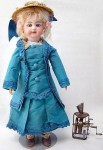 By the time the first Edison Talking Dolls went on sale on April 7, 1890, the tin cylinders had been replaced with wax models. We don’t know why he switched to wax, but it was not a good choice. The phonograph needles were steel. When the dolls were shipped to vendors, they often arrived with the cylinders scratched from jostling in transit. Even if they made it safely into a little girl’s hands, simply playing the records ground down the wax so they quickly stopped working.
By the time the first Edison Talking Dolls went on sale on April 7, 1890, the tin cylinders had been replaced with wax models. We don’t know why he switched to wax, but it was not a good choice. The phonograph needles were steel. When the dolls were shipped to vendors, they often arrived with the cylinders scratched from jostling in transit. Even if they made it safely into a little girl’s hands, simply playing the records ground down the wax so they quickly stopped working.
Fewer than 500 dolls were sold and most of them were returned to the company for being such an overall crappy product. By the end of May, the Edison Toy Manufacturing Company stopped production. To make a little money back, Edison stripped the unsold stock of their phonographs and sold them just as dolls. This is why Edison talking dolls in good condition with their original phonographs are so highly sought after by collectors.
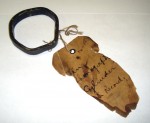 Rarer even than the complete dolls are the original tin cylinders Edison used in 1888 before switching to wax. In fact, as far as we know, there is only one of them. National Park Service curators at the Edison Laboratory in West Orange found it in 1967 when taking inventory of the contents of the desk of Edison’s secretary William H. Meadowcroft. It was helpfully tagged “Tin Phonograph Cylinder […]l Record” suggesting that it’s not only the sole surviving tin talking doll cylinder, but also in all likelihood the first one ever made.
Rarer even than the complete dolls are the original tin cylinders Edison used in 1888 before switching to wax. In fact, as far as we know, there is only one of them. National Park Service curators at the Edison Laboratory in West Orange found it in 1967 when taking inventory of the contents of the desk of Edison’s secretary William H. Meadowcroft. It was helpfully tagged “Tin Phonograph Cylinder […]l Record” suggesting that it’s not only the sole surviving tin talking doll cylinder, but also in all likelihood the first one ever made.
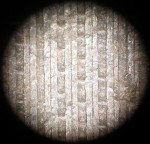 Five years ago, Jerry Fabris, a curator at the Thomas Edison National Historical Park in West Orange, tried to figure out what exactly was on the cylinder. It was dented and misshapen so it couldn’t just be played, and there was no date or specific reference to the talking doll. He examined it under a microscope and found that there was a recording groove, but could go no further until technology stepped in to save the day.
Five years ago, Jerry Fabris, a curator at the Thomas Edison National Historical Park in West Orange, tried to figure out what exactly was on the cylinder. It was dented and misshapen so it couldn’t just be played, and there was no date or specific reference to the talking doll. He examined it under a microscope and found that there was a recording groove, but could go no further until technology stepped in to save the day.
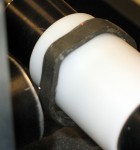 In May of last year, Fabris brought the tin cylinder to the Lawrence Berkeley National Laboratory in California, which has had terrific success reading sound off of historical media. The Lawrence researchers were able to scan the groove of the tin cylinder using their 3-D optical scanning technology. They then created a digital model of the surface which through software analysis was converted into an audio file. The entire recording except for the first syllable was recovered.
In May of last year, Fabris brought the tin cylinder to the Lawrence Berkeley National Laboratory in California, which has had terrific success reading sound off of historical media. The Lawrence researchers were able to scan the groove of the tin cylinder using their 3-D optical scanning technology. They then created a digital model of the surface which through software analysis was converted into an audio file. The entire recording except for the first syllable was recovered.
This one is “Twinkle, Twinkle, Little Star” and although it’s still screechy, warbly, scratchy and weird, it’s considerably less scary and more comprehensible than Little Jack Horner.
[audioplayer file=”http://www.thehistoryblog.com/wp-content/uploads/2012/06/edisondoll.mp3″ title=”Twinkle, Twinkle, Little Star”]
You just heard something that until very recently hadn’t been heard in over a century, and the voice of one of the world’s first professional recording artists.